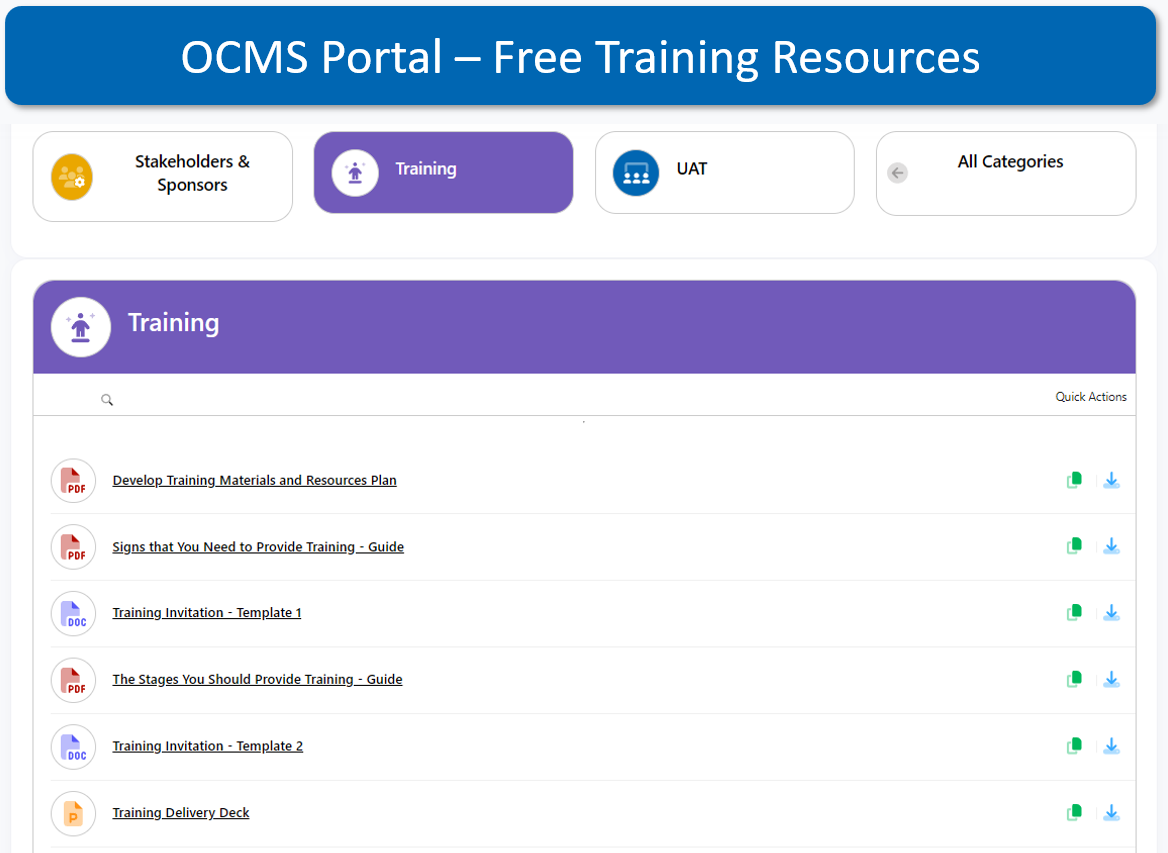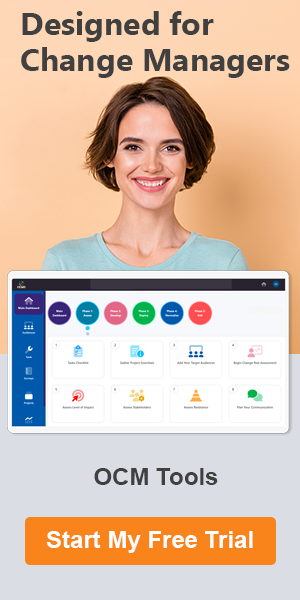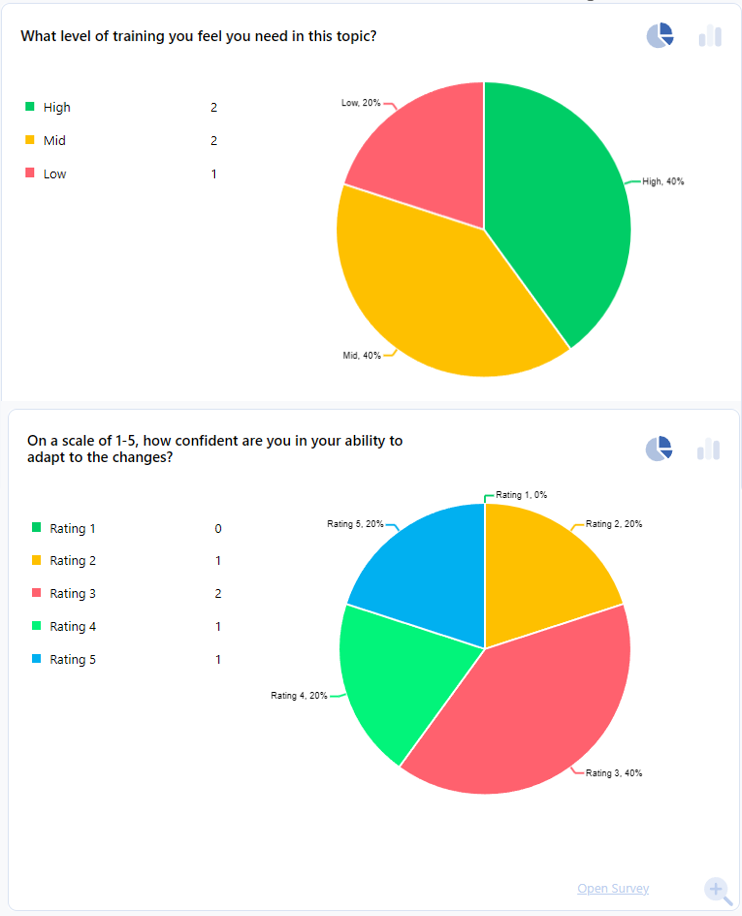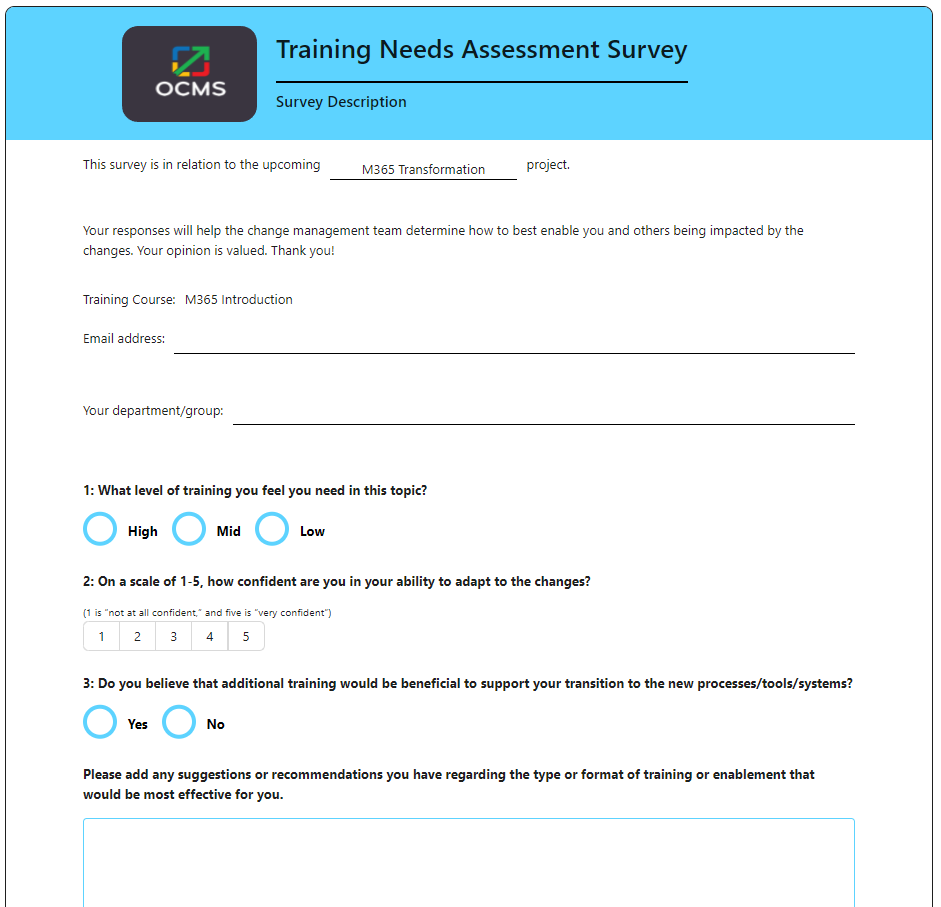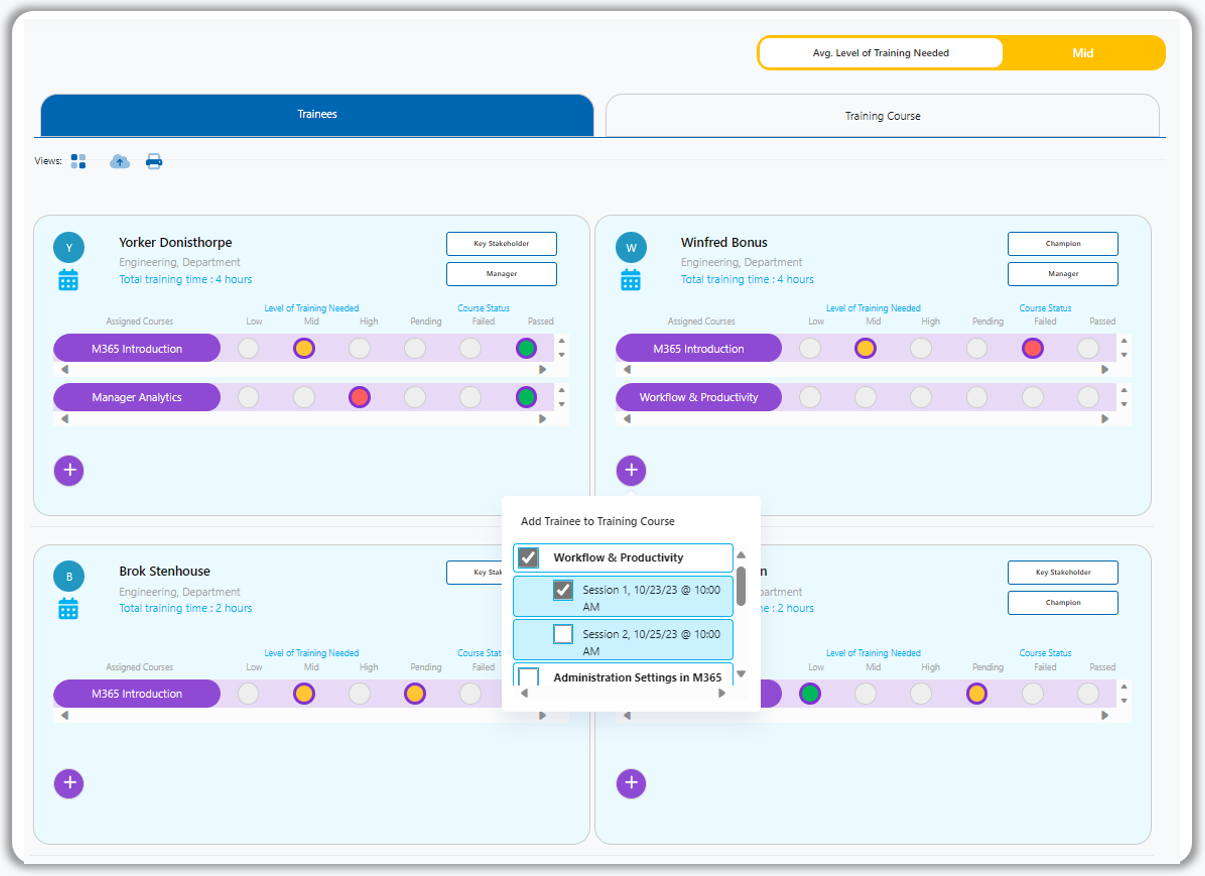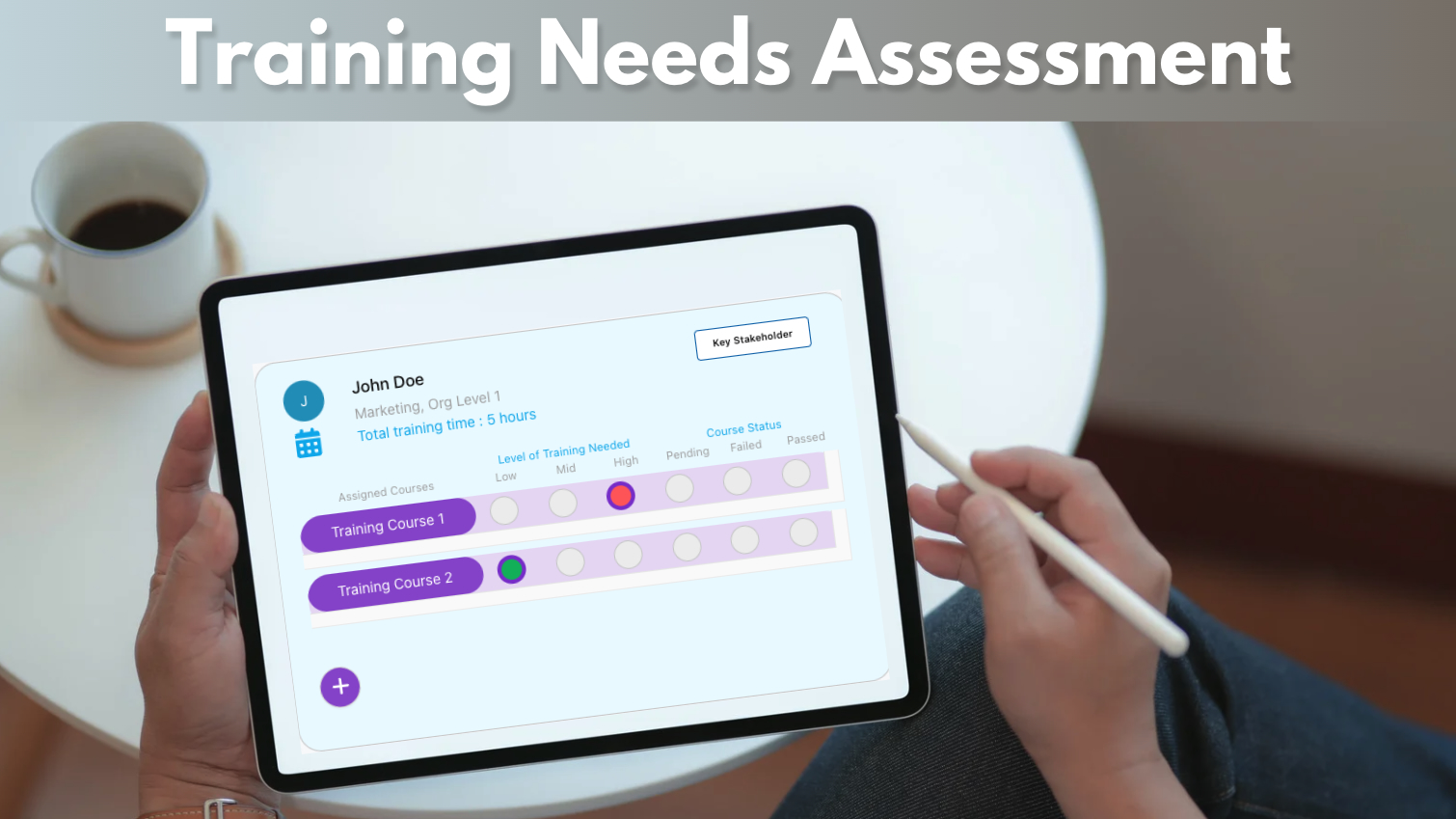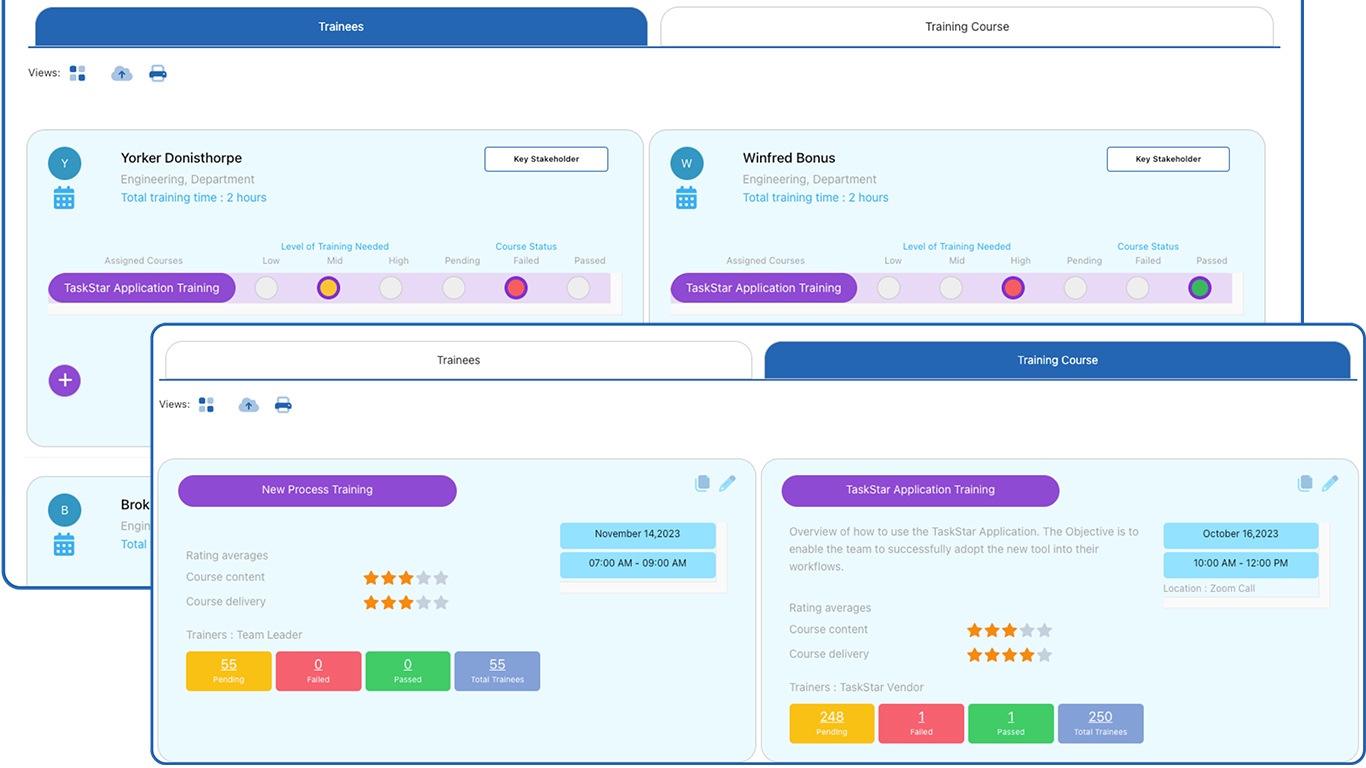Complete Guide with Step-by-Step Training Process in HRM
(Human Resources Management)
Learn the Training and Development Process in HRM
Ever wondered how organizations nurture their employees’ skills, boost morale, and enhance productivity? Well, that’s the magic of HRM training and development.
HRM & HRD training and development transforms workplaces and empowers individuals to reach their full potential.
In this article, we’ll explore why it’s crucial for companies to invest in their employees’ growth, how it positively impacts the workplace, and the best practices on how to effectively implement the training and development process in HRM.
Enjoy a quick summary of the topic below, and if you’d like more detail, keep reading for more discussion on the need of training in HRM.
Quick Summary
What is Training in HRM?
Training in Human Resource Management (HRM) involves educational activities aimed at imparting new knowledge or skills to employees within an organization. This definition is specific to HRM, focusing on developing and teaching employees, distinguishing it from training in other fields.
While occasionally used for HR personnel training, the primary focus is on the HR department’s role in training and developing company staff. HRM training and development emphasizes the enhancement of employees’ skills, knowledge, and professional growth through training and development programs within a company.
What is the Importance of Training and Development in HRM?
Training and development in HRM are pivotal for organizational success, as highlighted by entrepreneur Richard Branson’s famous quote: “Train people well enough so they can leave, treat them well enough so they don’t want to.”
Investing in HRM training and development methods is a direct investment in the organization’s most valuable asset – its employees.
Beyond enhancing skills and enabling career growth, HRD training benefits the organization by:
- Improving productivity
- Fostering higher employee retention
- Empowering teams to enhance the company
- Strengthening leadership within the organization
- Boosting employee engagement
- Enhancing operational efficiency
- Ensuring the success of projects impacting staff
Neglecting training needs analysis in HRM can lead to talent loss, decreased competitiveness, and hinder the company’s overall strength, emphasizing the critical importance of prioritizing training and development in HRD activities.
Looking for Free Training & Development Templates & Tools?
OCMS Portal offers over 100 free resources for change management, including HRD training and development templates.
What are the Three Levels of Training Needs Analysis?
When determining training needs in HRM, a crucial step is conducting a Training Needs Analysis (TNA) to assess the specific requirements at different levels within the organization. The TNA HRM process is performed based on the types of training required, addressing the varying needs of individuals, job roles, and the entire organization.
Levels of Training Needs Analysis in HRM
- Organizational-Level HRD Need Assessment: At the organizational level, HRD training and development focus on addressing company-wide requirements and goals. This level involves evaluating needs related to achieving new corporate goals, training for projects impacting all company groups, or meeting bottom-line Key Performance Indicators (KPIs).
- Team or Job Role-Level HRD Need Assessment: The analysis at the team or job role level targets specific indicators such as KPIs or new department goals or projects, necessitating training and development.
- Individual-Level HRD Need Assessment: At the individual level, ongoing employee development in HRM focuses on providing continuous support for career growth and personal work skills.
What are the Steps in the HRM Training Process?
The training process in HRM comprises six steps designed to help HR professionals define, assess, plan, and execute training initiatives effectively, ensuring continuous improvement and development within the organization.
Step 1: Define the Need of HRD Training
Identify specific reasons and goals for training, such as addressing new projects or improving company processes.
Step 2: Determine the Training Audience
Determine the target audience for HRM training, whether specific departments or individuals, based on project requirements and organizational needs.
Step 3: Do an Audience HRD Need Assessment
Conduct a detailed training need analysis for identified audiences, assessing current skills and identifying gaps to meet the goals outlined in step 1.
Step 4: Create a Plan for the HR Training Process
Develop a comprehensive training plan, outlining program topics, training timeline, trainers, delivery methods, curriculum, and visual assets. Include metrics for tracking and evaluating HRD training delivery.
Step 5: Conduct HRD Training
Implement the training plan, tracking trainee activities and progress. Utilize user-friendly templates and tools, like the OCMS Portal’s Training Tracking Tool, to streamline the training process and automate reporting.
Step 6: Evaluate the Employee HR Training Methods & Results
Evaluate the effectiveness of HR training methods and results, analyzing training completion, trainee status, scores, and post-training survey feedback. Use these evaluations to refine future training initiatives and ensure continuous improvement.
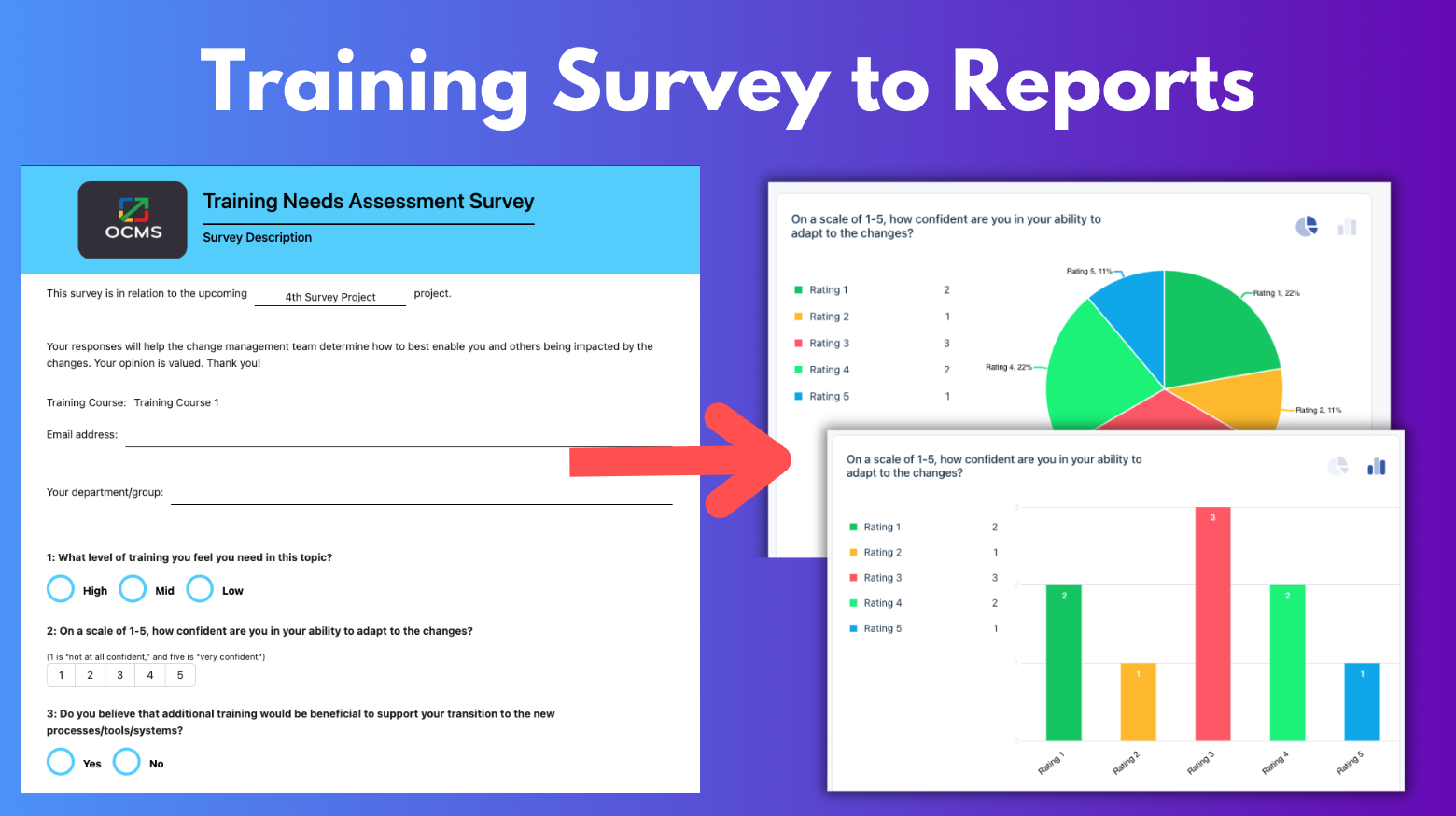
Need a better way for assessing HRD needs? Try the Training Tool in the OCMS Portal cloud platform. You can sign up for a free trial now (no credit card is needed).
HRD Training Summary Conclusion
Investing in training and development in human resource management isn’t just a smart business move; it’s a powerful way to foster a dynamic, skilled, and motivated workforce. By providing continuous learning opportunities, organizations not only ensure their employees stay ahead in their fields but also create an environment where innovation thrives, and talents are nurtured.
Remember, a well-trained team isn’t just an asset; it’s the heartbeat of a successful, vibrant workplace. So, keep championing growth, embracing change, and watch your organization flourish with the passion and expertise of a team that’s always one step ahead.
Detailed Deep Dive
How to Conduct TNA HRM Assessments – Everything You Need to Know (Understanding the Need for Training in HRM)
In order for a company to thrive and grow, that company needs to develop its workforce on a continuous basis. This is a key reason why one of the core functions of HR is human resource development (HRD).
Human Resource Management (HRM) is far more than just hiring, onboarding, and managing payroll for staff. Training and development in HRM also need to be addressed to ensure that employees have the skills and knowledge they require to perform at an optimal level. In this HRD training guide, we’ll take you through the steps in training process in HRM, including HRM training and development methods, and the training need assessment in HRM.
We also highlight the best-in-class OCMS Portal’s Training Management Tool, with templates, an HR training process checklist, and samples to help enable your training needs in HRM.
Human resource and training professionals often need to consider different types of HR training in their process. For example, there is the onboarding of new hires, project-driven training, leadership development, and more. (We’ll get into these different needs of training in HRM in this guide.)
OCMS Portal Software for Training in HRD
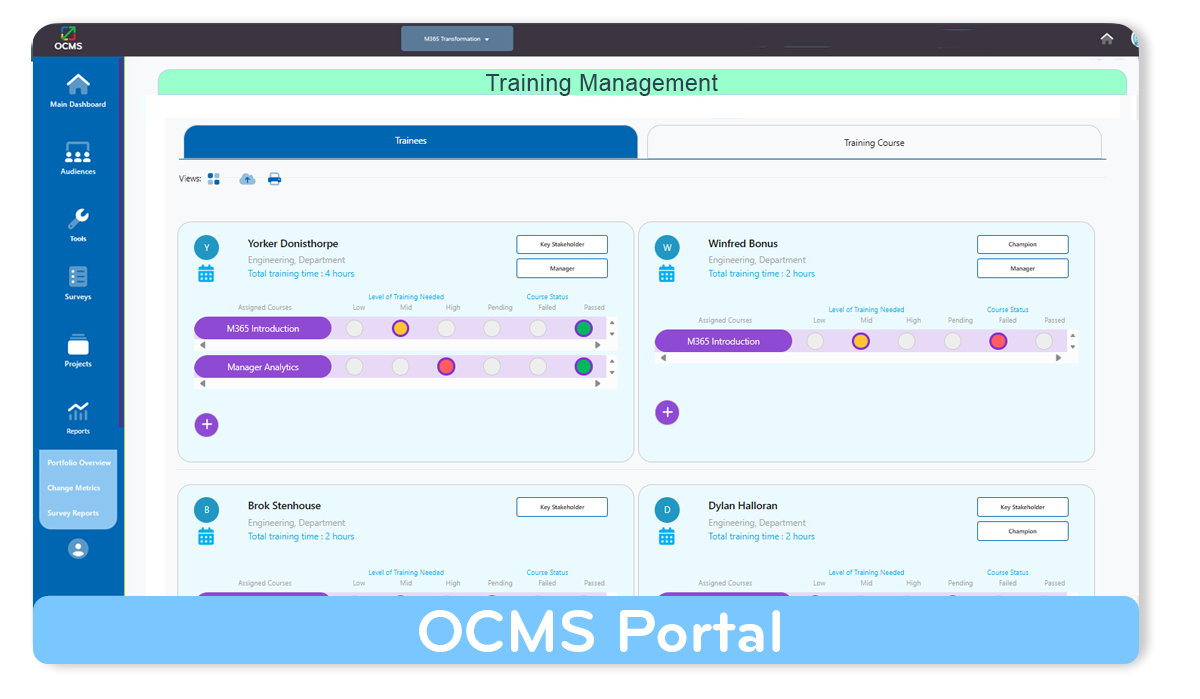
OCMS Portal’s Training Management Tool
Contact us if you have any questions or feedback about this article.
Table of Contents: Training & Development in HRM Guide
Keep on scrolling down this page to read each section or click any link below to go directly to that section.
1. What Is Training in HRM?
a. Training Definition in HRM
2. What is the Difference Between HRD Training and Development?
a. What is HR Training?
b. What is HR Development?
3. What Is the Importance of Training and Development in HRM?
4. What Are the Three Levels of Training Needs Analysis?
5. What Are the Different Types of HR Training?
6. What Are the 6 Steps in the Training Process in HRM?
a. Step 1: Define the Need of HRD Training
b. Step 2: Determine HRD Training Audience
c. Step 3: Do an Audience HRD Need Assessment
d. Step 4: Create a Plan for the HR Training Process
e. Step 5: Conduct HRD Training
f. Step 6: Evaluate the Employee HR Training Methods & Results
7. OCMS Portal’s Templates for Training and Development in HRM & Assessing HRD Needs
8. Conclusion – Determining Training Needs in HRM
9. FAQ | Training and Development in HRM
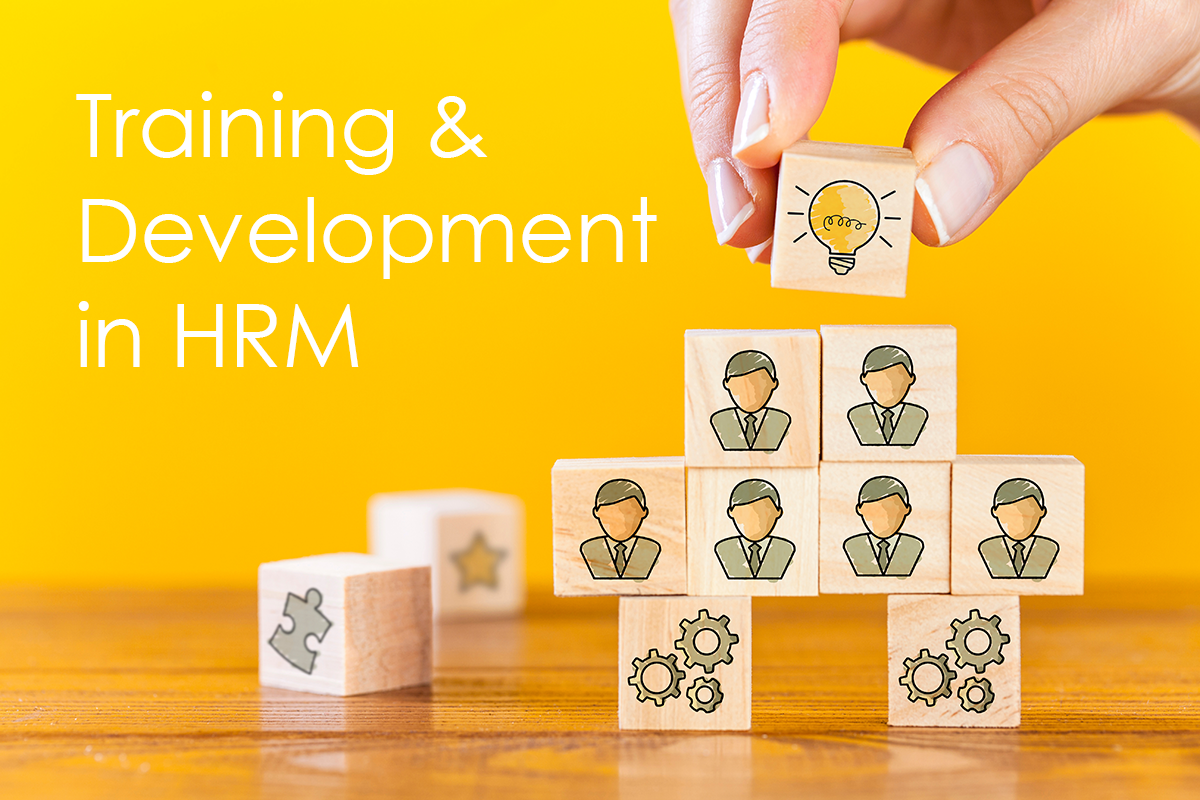
The training and development process in HRM is important to develop, as this provides you with a standard set of steps you can take for all types of training in HRD. Contact us if you have any questions or feedback about this article.
What Is Training in HRM?
So, let’s start with the basics, how to define training in HRM. The training definition in HRM is similar to a training definition in another area. It’s the educational activities undertaken to teach someone new knowledge or skills.
You’ll note that we said “similar” to another area when discussing how to define training in HRM. That’s because the training definition in HRM is specific to developing and teaching the employees of an organization. This makes it slightly more specific than the training definition in other fields.
What is training in HRM can also occasionally be used to describe training for HR personnel, as in specific training for those that work in human resources. However, typically when you define training in HRM, it’s about the function of the HR department to train and develop company staff.
Training Definition in HRM
Here are a few online resources related to HR, and how they define training in HRM:
- IBM training definition in HRM: “Training and development programs help employees learn and acquire new skills, as well as gain the professional knowledge required to progress their careers.”
- Association for Talent Development HR training process definition: “Employee training and development includes any activity that helps employees acquire new, or improve existing, knowledge or skills.”
- TalentLyft training definition in HRM: “Training and development refer to educational activities within a company created to enhance the knowledge and skills of employees while providing information and instruction on how to better perform specific tasks.”
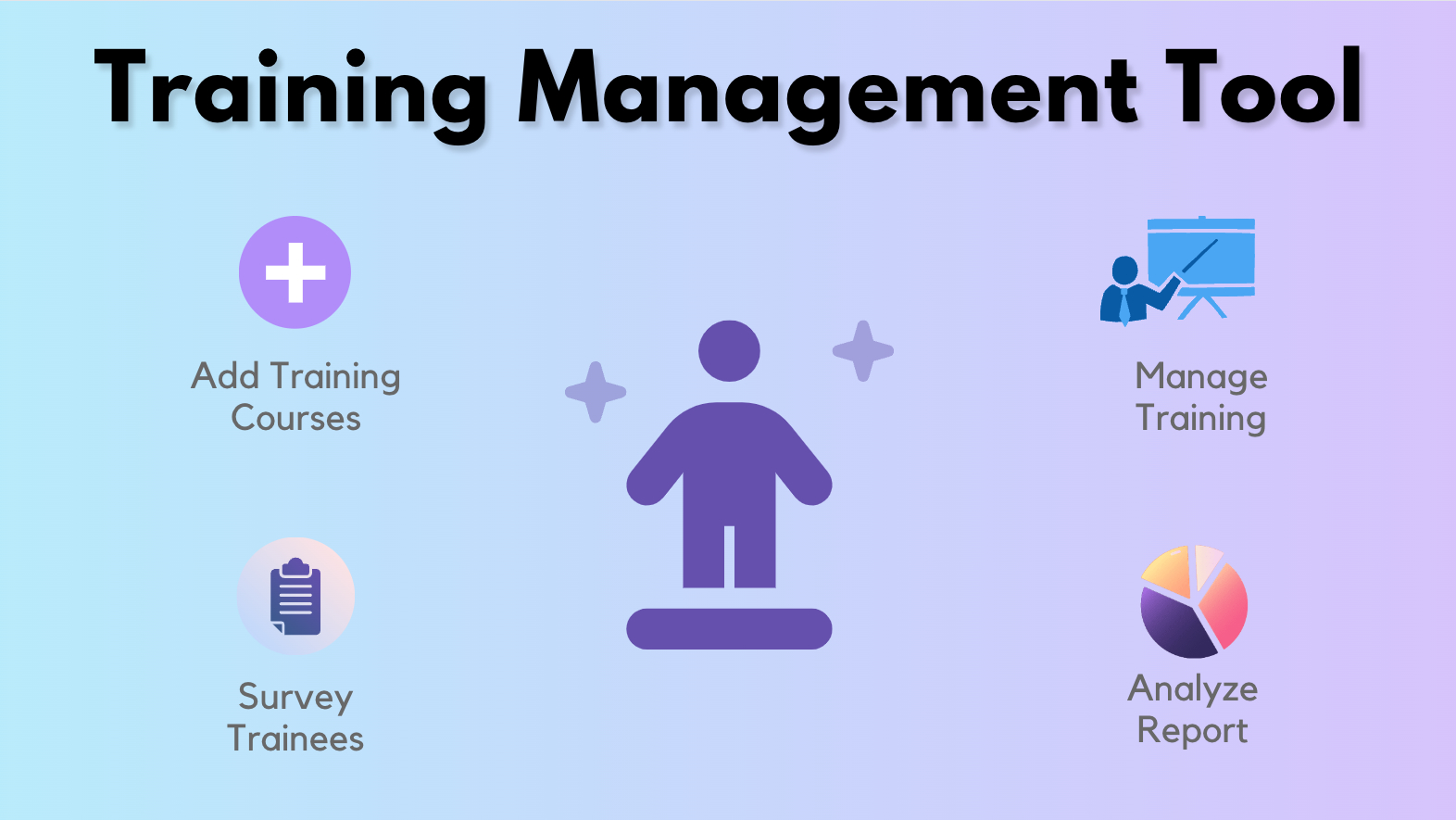
Need a great cloud-based tool to help with training and development in HRM? Start a free OCMS Portal trial today and get instant access to our comprehensive training tools.
Do you have any questions about the training definition in HRM or how to define training in HRM for your organization? Need more explanation to grasp, “What is training in HRM?” Please reach out and let us know!
What is the Difference Between HRD Training and Development?
Typically, you will hear the terms training and development in HRM used together as one action or responsibility. This is because the two are related and often linked together.
The training and development process in HRM, however, makes a distinction between “training” and “development.” One is used to support the needs of the other. In other words, training and development in HRD, while closely aligned, aren’t the exact same thing.
What is HR Training?
Employee training in HRM is the act of teaching people new skills, knowledge, and/or processes. When deploying training, certain steps are being taken, such as doing training need analysis in HRM, planning topics, developing training curricula, and conducting the actual training sessions.
What is HR training? It’s the act of educating employees on the information that’s been identified for them to learn.
What is HR Development?
Employee development in HRM is a process by which employees are nurtured. Their skills and knowledge are developed in an effort to improve their value to the organization. Development is an ongoing process that will usually incorporate various types of HR training over the years.
Besides improving the organization as a whole, from the employee level up, employee development in HRM can also improve talent retention rates. This is because people feel that they are growing, and that the organization is investing in them through an ongoing training and development process in HRM.
Sample Reports from the OCMS Portal Software with tools for Managing Training and Development in HRD
Get a holistic view of group and employee training in HRM with OCMS Portal and its integrated Training Assessment and Management Tool.
What Is the Importance of Training and Development in HRM?
One of the well-known quotes from entrepreneur Richard Branson about employee training in HRM is, “Train people well enough so they can leave, treat them well enough so they don’t want to.”
This quote emphasizes the importance of HRD training and development for staff, which has many benefits. Employees are arguably the most valuable resource of an organization, so investing in HRM training and development methods is an investment that will positively impact your organization directly.
The need of training in HRM goes beyond just talent retention and improving employees’ skills so they can be more productive or rise to higher positions in an organization. Not doing training need analysis in HRM or using a TNA process in HRM can hurt company competitiveness and cause it to lose valuable talent.
When you make training and development in HRD a priority for your organization’s ongoing HR activities, here are some of the benefits:
- Improvement in productivity
- Higher employee retention
- Empowers your team to make your organization better
- Makes the company stronger because you develop leaders that previously held other positions in the company
- Boosts employee engagement
- Improves operational efficiency
- Helps ensure projects impacting staff are successful
Please reach out if you have any questions about training for HR personnel, the need for training in HRM, or how to do training need analysis in HRM. We’ll be happy to help!
OCMS Portal’s Survey for Training Need Assessment in HRM
OCMS Portal’s Training Management Tool has surveys to make it easy for you to generate multiple reports used for the TNA process in HRM. We’ll get into this process more when we discuss the steps in training process in HRM shortly.
What Are the Three Levels of Training Needs Analysis?
When determining training needs in HRM, you’ll be doing what is called a training needs analysis (TNA). This helps the HR team determine the needs of training in HRM for groups and individuals.
Depending on the types of HR training being done, you will usually perform the TNA HRM process at one or more levels of hierarchy in the organization. The need of training in HRM will be different depending on the reason for the training and the goals that are to be achieved.
While the training process in HRM includes training people – the staff of the organization – when assessing the need for training in HRM you may be doing it at the individual level, or a job role level. Or the need of HRD training may be for the organization as a whole.
If you’re wondering, “What are the three levels of training needs analysis?” we’ll be going through that now.
Organizational-Level HRD Need Assessment
When assessing the need for training and development in HRD at the organizational level, this is typically done to address company-wide requirements or goals.
You will be looking at employees across the company and assessing HRD needs for things like meeting new corporate goals, training on a new project impacting all groups in a company, or addressing bottom-line KPIs.
Team or Job Role-Level HRD Need Assessment
The next level of analysis of need of HRD training is at the team or job role level. This is when indicators such as KPIs or new department goals may require HRM training and development methods to be deployed.
There may also be a job role-specific need of training in HRM related to a project that is impacting that role or impacting it in a different way than other groups.

What are the three levels of training needs analysis in HRM?
Individual-Level HRD Need Assessment
Ongoing employee development in HRM, where individuals are receiving continual support for their careers and personal work skills, is done at the individual level.
This type of training need analysis in HRM looks at a person’s position, goals for the future, and what they may have noted in a survey for areas of training interest.
Let us know if you’d like more information about HR training methods, the needs of training in HRM, the TNA process in HRM, or the steps in training process in HRM.
What Are the Different Types of HR Training?
Training and development in HRM encompass many different types of training that can be deployed to enable employees. The training need assessment in HRM helps to determine what type of training is needed and what skills need to be taught.
When planning employee training in HRM, it’s important to understand the different types of HR training so they can be incorporated effectively into the organization’s training program. In this way, holistic training in HRD can be developed.
Types of training needs in HRM include the following:
- Personal training and development in HRM: This involves developing the career skills and knowledge of individual employees.
- Project-driven need for training in HRM: When a project is impacting employees, they often need the training to adopt a new process, system, or tool.
- Cross-training in HRD: Cross-training involves role or responsibility training where people learn certain duties they normally don’t handle.
- Improvement-driven need of training in HRM: If an organization is faltering in a certain area, a TNA HRM can help determine training that can fill a skills gap.
- Leadership training process in HRM: This is training specifically related to helping employees move into positions of leadership and/or enhance leadership skills.
- Onboarding needs of training in HRM: Most organizations have onboarding training for new hires that is done to ensure people have the knowledge they need to get started.
- Skills training and development in HRD: This involves HR training for certain skills, such as cybersecurity awareness, presentation skills, etc. This can be done on an as-needed basis per individual or for the organization as a whole at once.
The OCMS Portal’s Training Management Tool gives you one place for handling the training and development process in HRM.
OCMS Portal’s Training Tracking Software includes templates to manage employee training in HRM, free planning templates, insightful analytics, and a checklist for the training process in HRM.
Sign up for a Free Trial Now (no credit card needed)
What Are the 6 Steps in the Training Process in HRM?
Applying HRM training and development methods to enable the skills and knowledge of an organization’s workforce requires a strategic and repeatable approach. This approach is your training process in HRM.
Next, we’ll go through the six steps you can use to help you define training in HRM for your organization. These steps in training process in HRM workflows can be used for any type of training for HR personnel to manage.
These steps for training and development in HRM will take you through the process of managing training, from determining training needs in HRM to evaluating the results of the training process in HRM.
Step 1: Define the Need of HRD Training
First, you need to define the need for HRD training. For example, is there a project that may require employees to be trained in a new process? Or is there an improvement needed in the company that leadership feels can be addressed through filling a need for training in HRM?
In this first step, you’ll be identifying the specific reason for the needs of training in HRM and the goals that the additional skills and knowledge boost are anticipated to achieve.
Step 2: Determine HRD Training Audience
The next step after you define the need of training in HRM is when you’ll determine the training audience. In some cases, the answer to, “What is HR training audience for this training” will be just a few people. In other cases, it might be most of the departments in an organization.
If you are assessing HRD needs for a specific project that is impacting the way employees do things, then you can often find the HRD training and development audience(s) from the change impacts assessment.
Step 3: Do an Audience HRD Need Assessment
In this step, you’ll do a training need analysis in HRM for your audiences. This is different from the assessment of the need for training in HRM from the first step, as that one is to identify the training need and goals.
This assessment of employee development in HRM is to identify where current skills are for your training audiences and where they may fall short of the goals outlined in step 1. For this, you’ll be assessing HRD needs specifically for the audiences you identified.
Here is an example of the template for training need assessment in HRM from the OCMS Portal’s Training Management Software Tool.
Step 4: Create a Plan for the HR Training Process
Based on the training audience training need analysis in HRM, you’ll be creating your training plan. This will include the training program and topics that need to be taught to each training audience.
Some of the other things to include in your plan of the training process in HRM include:
- Training timeline
- Trainers
- Methods of training delivery
- Metrics that will be tracked to evaluate HRD training delivery
- Training topic curriculum and visual assets
Step 5: Conduct HRD Training
Next, using the HR training methods and details in your training plan, you’ll be carrying out the training of your trainee audiences. It’s important in HRD training and development to track your training activities (such as when trainees have completed training, their training status, training scores, and post-training survey results).
It’s best to use a template for training and development in HRM to do this. One that has automated reporting and an easy-to-use interface, such as the Training Tracking Tool in the OCMS Portal. It can save you a lot of time during your training process in HRM.
Step 6: Evaluate the Employee HR Training Methods & Results
What is training in HRM without a post-training evaluation? Some would argue, only partially effective. It’s important to gather feedback from those that participated in the training so you can understand if your training and development process in HRM met the desired goals.
Do you know more that we should add to the training and development process in HRM described above? Are you still wondering, “What is training in HRM?” Want to know more about how to define training in HRM? We’d love to hear from you!
OCMS Portal Templates for Training and Development in HRM & Assessing HRD Needs
If you’re looking for HRD training templates & samples, you’ve come to the right place! The OCMS Portal’s Training Management Tool allows you to easily perform end-to-end management of your training process in HRM.
This is powerful cloud software that can be accessed from anywhere and can be used with any HRM training and development methods you may use. It includes helpful templates and surveys for employee development in HRM. Plus, automated reporting that updates as you enter data into your training program and audience templates.
The OCMS Portal’s training management tool includes:
- Add training courses & trainees easily
- Two views – Course view and Trainees view
- Free training templates, including a sample training curriculum template, sample training plan examples, and more.
- Build-in training needs assessment and training feedback surveys to save you time
- Auto-generated training plan and overall OCM plan
- The sample training plans are based on your training needs assessment.
Click below to start a free trial of OCMS Portal to begin enjoying all these benefits. There’s no credit card needed, and you’ll get instant access.
OCMS Portal HRD Training & Development Tool – Start Your Free Trial Now
Conclusion – Determining Training Needs in HRM
The need of HRD training and development dictates that a comprehensive methodology and HR training process be used to ensure that employees can gain the skills and knowledge needed to enhance the organization’s performance.
Using templates and software for training and development in HRM is a must if you want a scalable solution that can track all historical training and provide important insights into how well your employee development in HRM is going.
The six-step process listed above to fill the need of HRD training in organizations can help you put an effective and repeatable strategy in place for ongoing staff training and development. This will help you improve the performance of employees and the entire organization.
FAQ | Training and Development in HRM
What is training in HRM?
The training definition in HRM is similar to a training definition in another area. It’s the educational activities undertaken to teach someone new knowledge or skills. Training in HRM is specific to developing and teaching the employees of an organization.
What is the importance of training and development in HRM?
Employees are arguably the most valuable resource of an organization, so investing in HRM training and development methods is an investment that will positively impact your organization directly.
What are the 6 steps of the training process in HRM?
The six steps of the process for training and development in HRM are as follows:
• Step 1: Define the Need of HRD Training
• Step 2: Determine HRD Training Audience
• Step 3: Do an Audience HRD Need Assessment
• Step 4: Create a Plan for the HR Training Process
• Step 5: Conduct HRD Training
• Step 6: Evaluate the Employee HR Training Methods & Results
What are the three levels of training needs analysis?
When assessing the needs of training in HRM, there are three standard levels for the TNA process in HRM:
• Organizational-Level HRD Need Assessment
• Team or Job Role-Level HRD Need Assessment
• Individual-Level HRD Need Assessment
Note: Content on OCM Solution's ocmsolution.com website is protected by copyright. Should you have any questions or comments regarding this OCM Solutions page, please reach out to Ogbe Airiodion (Change Management Lead) or the OCM Solutions Team today. OCM Solution was previously known as Airiodion Global Services (AGS).
External sources: stock.adobe.com


